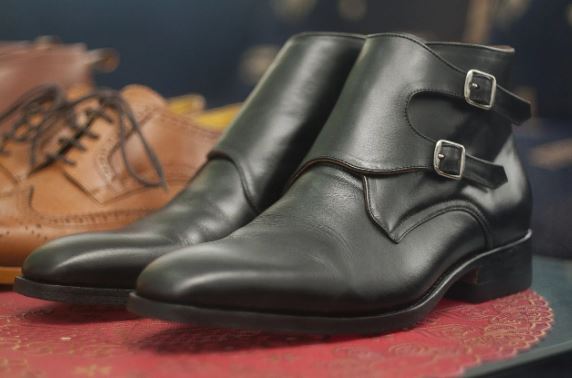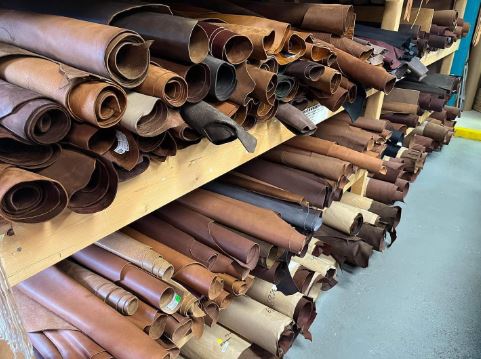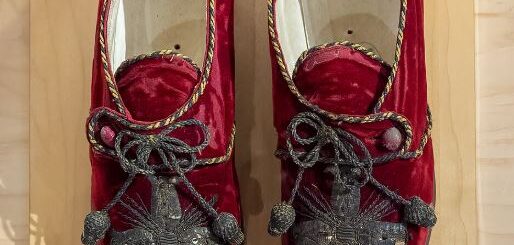Why Identical Shoes Can Feel Different
Many people have encountered this puzzling situation: you buy two pairs of shoes from the same brand, made in the same size and on the same last, yet they fit differently. One pair feels snug, while the other feels loose. A major factor behind this variation often lies in the different types of leather used in manufacturing. The material’s characteristics can significantly influence not only the production process but also the final feel of the shoe on your foot. Let’s dive deeper into how leather and other materials impact shoe fit.
The Challenges of Maintaining Consistent Fit
Whether crafting footwear on a large factory scale or through the meticulous process of bespoke shoemaking, maintaining consistency in fit is an ongoing challenge. Even for custom shoemakers who create personalized lasts, ensuring every new pair feels the same is more complex than it appears. In previous discussions, we explored how variations in shoe patterns affect fit; this time, we’ll focus on how different materials play a pivotal role.

Characteristics of Common Leathers
The most widely used material for dress shoes is smooth calf leather. This leather type boasts a dense fiber structure, especially in the grain layer, offering both strength and flexibility. Thanks to its high tensile strength, calf leather can be pulled tightly over the last during production, helping the shoe maintain its shape and fit. However, even within smooth calf leathers, there are significant differences. Factors like the leather’s thickness, the tanning process (whether fully chrome-tanned or a combination of chrome and vegetable tanning), and the degree of finish affect how much the material stretches during lasting and how it reacts afterward.
How Different Leathers Behave
When it comes to suede, things become even more nuanced. Full reverse calf suede, essentially the flesh side of full-grain calfskin, behaves similarly to smooth calf leather, though it may retain more of the looser corium fibers. On the other hand, split suede, which is more common today, is markedly different. Without the dense grain structure, split suede is softer, stretches more easily, and lacks the tensile strength of full-grain leathers. As a result, it requires gentler handling during the lasting process to avoid over-stretching.
Beyond suede, thicker cowhides, which are naturally firmer, and shell cordovan, known for its stiffness and low elasticity, present their own challenges. Shell cordovan, in particular, demands careful and precise lasting because it resists stretching and conforms less readily to the last shape.
Adapting Manufacturing Techniques
Footwear manufacturers are well aware of these material differences and adjust their methods accordingly. Machines may be calibrated differently based on the leather type, and artisans working by hand apply varying degrees of tension depending on the material they are working with. Sometimes, shoemakers add specific linings or reinforcements to compensate for the characteristics of a particular leather. Despite these adjustments, slight inconsistencies are inevitable, even when working with hides from the same batch.
For instance, shoes crafted from split suede often feel more spacious and less structured than their calf leather counterparts, even if they are made on the identical last in the same size. Similarly, shell cordovan shoes might feel a touch looser because of the leather’s stiffness and its minimal ability to mold closely to the foot. Still, the overall experience might not be drastically different because of the material’s density and resilience.
Understanding Fit Differences
It’s important to recognize that even if a pair of shoes made from different leathers feels slightly different, the foundational dimensions—such as the last’s length, heel-to-ball distance, and the heel cup—remain unchanged. Therefore, adjusting the size simply because one pair feels roomier isn’t generally advisable. Instead, minor modifications like adding a thin insole can effectively reduce internal volume and improve the fit without altering the overall sizing.
Shoes crafted from softer materials like split suede will naturally have more give, making them feel less restrictive. Conversely, stiffer materials like shell cordovan provide less stretch and molding, leading to a slightly different wearing experience, even if the size and shape are technically identical.
The Subtle Art Behind Every Pair
There are countless subtle variations that occur during the making of shoes, influenced heavily by the nature of the materials. While it’s not possible to cover every nuance, understanding the general impact of different leathers helps explain why shoes from the same maker, using the same last and labeled the same size, can still feel distinct on your feet.
Next time you notice a slight difference between two pairs, remember that the material’s unique behavior during the lasting process is likely the cause. With a simple tweak like a thin insole, you can fine-tune the fit without needing to question your shoe size. Footwear construction is as much about managing these minute variables as it is about design and craftsmanship.
Frequently Asked Questions
Why do shoes made on the same last sometimes fit differently?
Differences in the types of leather used can cause shoes made on the same last to fit differently, even if they are the same size and model.

How does smooth calf leather behave during shoe manufacturing?
Smooth calf leather has a dense fiber structure, high tensile strength, and good flexibility, allowing it to be pulled firmly over the last while retaining its shape.
What factors within calf leather can affect fit?
Variations in thickness, tanning methods, and finishing processes influence how calf leather stretches and how much it contracts after being lasted.
How does full reverse calf suede compare to smooth calf leather?
Full reverse calf suede behaves similarly to smooth calf leather but may feel slightly softer and stretch differently due to more retained flesh-side fibers.
What is the behavior of split suede compared to other types?
Split suede lacks the tight grain layer, making it softer, easier to stretch, and less structurally strong than full-grain leather.
How does shell cordovan affect the shoe fit?
Shell cordovan is stiff and resistant to stretching, requiring careful handling during lasting and often resulting in a slightly looser, firmer-feeling shoe.
What adjustments do manufacturers make for different leathers?
Manufacturers adjust machine settings, apply different tension levels, and sometimes add linings or backings to accommodate the material’s specific behavior.
Why might split suede shoes feel roomier than calf leather ones?
Split suede’s softer, stretchier nature means it conforms less tightly to the last, often resulting in a roomier fit even if the last and size are the same.
Should you change your shoe size if one pair feels looser?
Generally no; since the last dimensions remain the same, using a thin insole to fill extra volume is a better solution than changing sizes.
Can hides from the same leather type still vary?
Yes, even among hides of the same leather type, slight differences in fiber density, stretch, and finish can impact the shoe’s final fit.
How important is material choice for consistent shoe fit?
Extremely important; the type of leather or material used greatly influences how the shoe molds over the last and fits the foot.
What is the best approach if fit feels inconsistent between pairs?
Understand that material differences are natural, and make small adjustments like insoles to personalize the fit without altering your standard shoe size.







